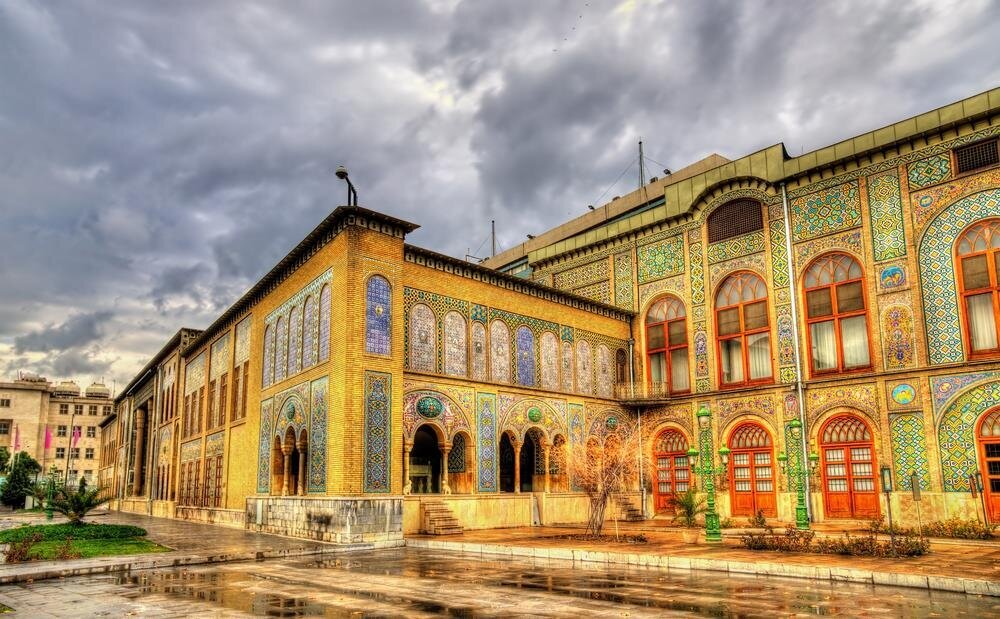
TEHRAN – An urgent restoration work has commenced on a selection of centuries-old Haft Rang (Seven-Colored) tiles that adorn the premises of the UNESCO-designated Golestan Palace in downtown Tehran.
“40 square meters out of 7000 square meters of Haft Rang tiles that embellish the premises of Golestan Palace will be treated in this round of restoration work,” an official with the World Heritage site said on Thursday.
These tiles were either subject to falling or were separated from their bed due to the wind and storm, Jabbar Avaj said.
“We will restore and fix them (in their original places) in this emergency phase, which will be running through September 22, the official said.
Haft Rang Persian Tile is a highly decorative glazed tile used to adorn the exterior and interior of secular and religious buildings. Those tiles first came to prominence in the late 15th and 16th centuries when artists frequently chose to decorate them with painted designs showing plants, birds, people and calligraphy.
During the Timurid and Safavid eras, this new tiling technique emerged to replace the widely used terracotta mosaic technique that had evolved gradually from the old technique of the faience mosaic.
Due to the time and costs involved in decorating buildings with the older mosaic faience, a new technique has been developed that is both cheaper and faster. Highest-ranked brick. With this new technique, it is no longer necessary to create designs from cut pieces of tiles or to create a prepared drawing to an exact scale, as the artist can now draw directly on the tile itself.
Because the Haft Rang tiles were directly plastered onto the walls, in comparison to mosaic faience, they were more prone to damage over time. This technique lasted until the Qajar dynasty (1789-1925) but slowly faded into the background during the later years of this period.
As mentioned, Haft Rang tiles are both cheaper and take less time to create. One of the reasons for such efficiency is that instead of the small tiles in the mosaic tile technique, the bricks are now cut into squares of various sizes which together form one large piece and will cover a much larger area.
Another reason is that, while in the mosaic technique, each color is fired separately, the Haft Rang tile allows the artisan to fire all colors at once, each color is separated from its adjacent colors by a manganese border to avoid them. of the mixture. Although this approach also has its drawbacks; Since each primary color requires a specific firing point to achieve the most vibrant and vibrant consistency, this technique reduces color richness by heating them all to the same temperature.
This way, the ability to paint all colors at once, the ability to paint directly onto the tiles, as well as the larger surface area of the tiles allowed artists to explore different patterns and patterns. drawings with a higher level of precision. detailed and exactly like the illustration of the human figure. This level of precision cannot be achieved with the technique of mosaic faience.
Although the name of this technique is Haft Rang, it does not necessarily mean that all seven colors are used in every tile piece or even in the entire composition, although in some cases it does. can happen. Some of the main colors used in this technique are black, white, turquoise, yellow, pastel pink, and cobalt blue.
TAGS

No comments:
Post a Comment